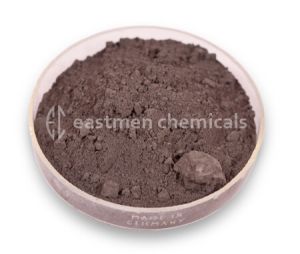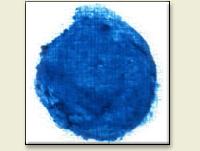
Cobalt Oxide
Get Price Quote
Cobalt Oxide (CoO) is metallic coloring oxide. It is mainly used in glazes to impart blue color, and if used in high percentage will impart black color in glazes, enamels and glass. Cobalt is considered as a powerful ceramic colorant that maintains stability in almost all systems. As much as 1% cobalt is used in many recipes. In oxidation process, it actively melts just like copper. When added to liquid frit base in high percentage, it will crystallize during cooling. Cobalt has limited practical applications, as it is expensive.Pure Cobalt Oxide contains 78.6% cobalt metal. Co3O4 is basically the product of commerce that is somewhere between CoO and dicobalt tetroxide (Co2O4). Co3O4 has an extra oxygen liberated during firing. At the time of glaze melting, raw cobalt oxide powder does not decompose to cobalt oxide, except if the kiln is fired in reduction. Due to these complications, it is important to make small adjustments in the percentage to adjust color when required.CoO is a product of Cobalt(III) oxide (Co2O3) decomposing at 900 degrees Celsius. It can be naturally found in ores with manganese, sulfur, arsenic and nickel. It can be majorly found in deposits in South Africa, Morocco and Canada. When it is roasted, arsenic and sulfur present produce toxic by-products. Co3O4 might be contaminated to some extent due to the associated ores. Carbonate is heated to make CoO. People must not try to roast the ore, especially fired too high in a kiln it will melt and eat through the container walls.Technical and ceramic grades of cobalt oxide are available. Its commercial ceramic grades must be carefully sieved or ball milled to prevent production of glaze specking. The specking amount may vary if different material from different suppliers are used and cause inconsistency in commercial products. Consistent and reliable results can be achieved with the use of cobalt carbonate that disperses better in glazes to give even blue coloration. This no so powerful cobalt carbonate might cause glaze blistering problems. One can switch from cobalt oxide to cobalt carbonate by multiplying by 93 and dividing by 63. Switching from cobalt carbonate to cobalt oxide will require multiplying by 63 and dividing by 93. This is because of the 63% CoO in carbonate form and 93% in oxide form. SPECIFICATION:- Co : 72% min

Cobalt Oxide
3,000 - 4,000 Per Kilogram
100 Kilogram (MOQ)
Best Deals from Cobalt Oxide

Cobalt Oxide
Get Price Quote
25 Kilogram (MOQ)

Cobalt Oxide
Get Price Quote

Cobalt Oxide
320 Per Gram

Cobalt Oxide
2,700 Per Kilogram

Cobalt Oxide
1,200 Per Kilogram

Cobalt Oxide
Get Price Quote

Cobalt Oxide
Get Price Quote
Cobalt Oxide, Tungsten Trioxide, Inorganic Chemicals, Spray Dryer

Cobalt Oxide
Get Price Quote
Cobalt Oxide, Inco Nickel Plate, black chromite sand

Cobalt Oxide
Get Price Quote
Cobalt Oxide, Cobalt Acetate, Cobalt Metal, Cobalt Chloride

Cobalt Oxide
Get Price Quote
Cobalt Oxide, Tungsten Trioxide, Chromium Acetate, Chromium Acetate

Cobalt Oxide
Get Price Quote
Cobalt Oxide, Selenium Granules, Antimony Metal, antimony tri oxide

Cobalt Oxide
Get Price Quote
Cobalt Oxide, high purity oxides, Manganese Oxide, glass frit

Cobalt Oxide
Get Price Quote
Cobalt Oxide, Brazing Alloys, vacuum coating materials, indium, Selenium

Cobalt Oxide
Get Price Quote
Cobalt Oxide, Bismuth Carbonate, Cobalt Chloride, Bismuth Oxide

Cobalt Oxide
Get Price Quote
Cobalt Oxide, cobalt scrap, cobalt manganese carbonate, Copper Concentrate